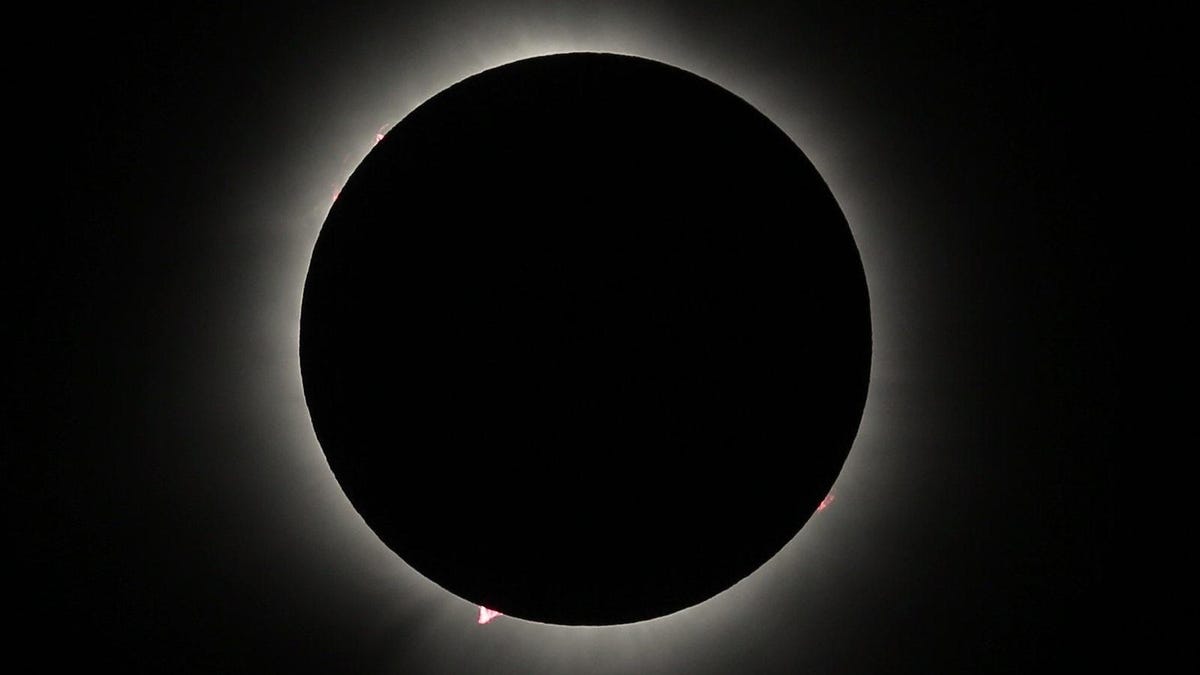We were hoping for something like this to happen. For a brief moment yesterday, the Sun waved to us from afar, telling us that it’s in the midst of a vibrant and dynamic phase of its 11-year cycle when solar eruptions and other phenomena are at their peak and more likely to occur.
Making TV History with Star Trek: Discovery
Nope, it wasn’t Baily’s Beads, those speckles of light peeking through the Moon’s jagged edges. Nor was it the Diamond Ring phase of the eclipse, when the Sun appears as a bright flash both immediately before and after the Moon completely covers it. It wasn’t a solar flare, either, a sudden and intense burst of electromagnetic radiation from the Sun’s surface.
Rather, it was a solar prominence—a reddish or pinkish structure extending from the edge of the Sun’s disk. Prominences can vary in size and shape, ranging from small, discrete loops to large, complex structures stretching across significant portions of the solar edge. Prominences are not technically classified as solar flares, but both appear with greater frequency during the Sun’s solar maximum phase.
During total solar eclipses, astronomers eagerly anticipate the chance to observe and study the Sun’s corona (or outer atmosphere) directly, as the Moon’s shadow blocks the Sun’s bright surface, eliminating the need for specialized equipment or space-based observatories. However, totality also provides an opportunity for eclipse observers to gaze upon these stellar features with their own eyes.
If you were fortunate enough to witness yesterday’s eclipse from within the path of totality, you likely saw these prominences, including a particularly bright red speck at the Sun’s bottom region, in addition to smaller beads appearing along its left and right sides. Astrophotographers managed to visualize the prominence, revealing its loop-like structure, but to observers on the ground, these features appeared as unusually bright red dots along the perimeter.
Prominences, unlike solar flares, are anchored to the Sun’s surface in the photosphere, extending outward into the corona. By contrast, solar flares rip themselves from the star’s surface, propelled by intense magnetic activity. Prominences, also known as filaments, take about a day to form and can last for several months. They’re also massive, looping hundreds of thousands of miles into space.
A depiction of a solar prominence, with Earth added to scale. Image: NASA
The red-glowing loops visible during solar prominences consist of plasma, composed of electrically charged hydrogen and helium, according to NASA. “The prominence plasma flows along a tangled and twisted structure of magnetic fields generated by the sun’s internal dynamo,” the space agency explains. “An erupting prominence occurs when such a structure becomes unstable and bursts outward, releasing the plasma.”
So yeah, if you were fortunate enough to see these tiny red dots, you literally witnessed a stellar outburst. Unreal.
More: Photos: Great North American Solar Eclipse
